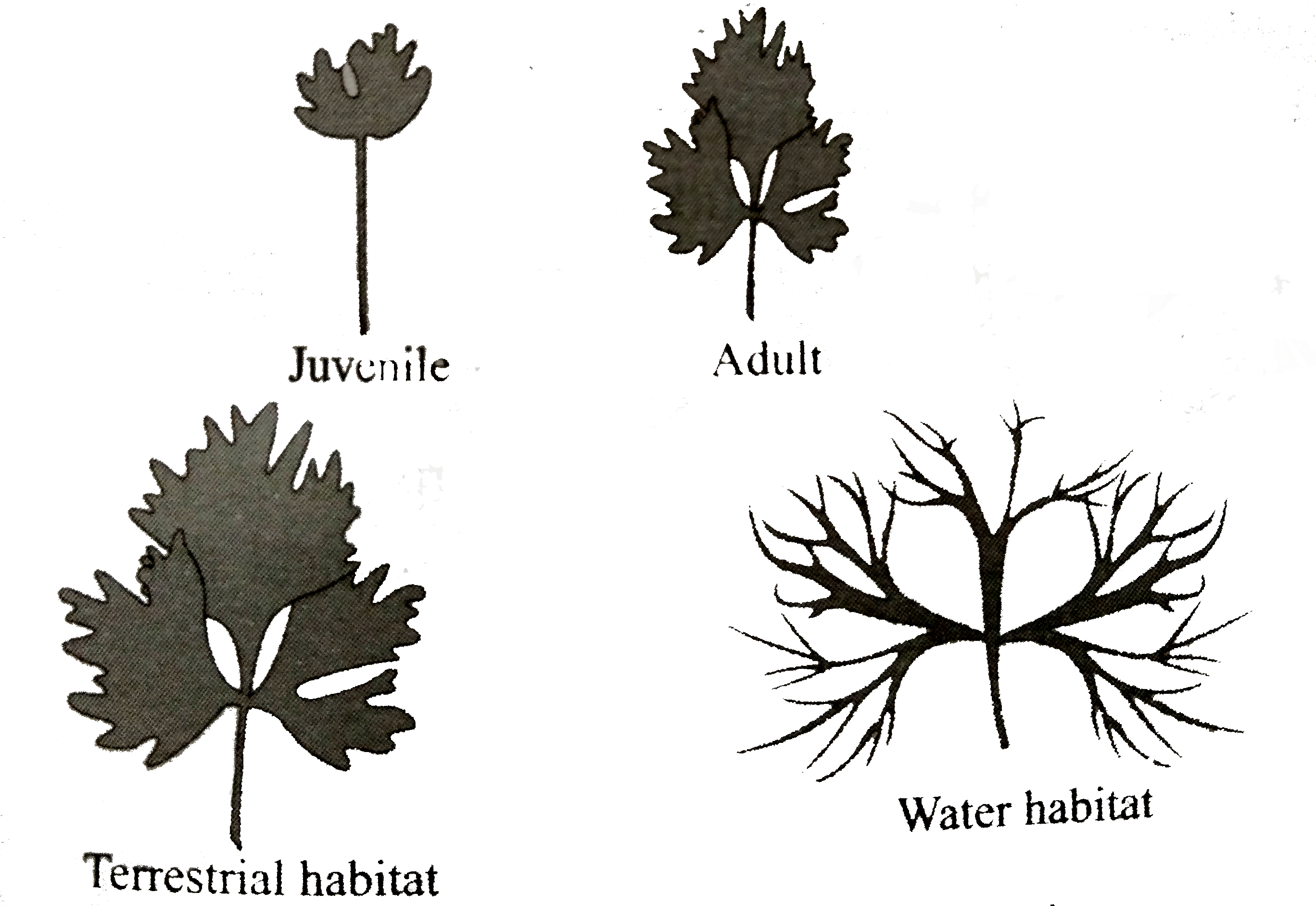Assertion :- Buttercup produces two different kind of leaves within the same plant body.
Reason:- Plants follow different pathways in response to environment or phases of life to form different kinds of structures, due to plasticity.
If both assertion and reason are true and reason is the correct explanation of assertion.
If both assertion and reason are true but reason is not the correct explanation of assertion.
If assertion is true but reason is false.
If both assertion and reason are false.
The correct Answer is:A
Step by step video, text & image solution for Assertion :- Buttercup produces two different kind of leaves within the same plant body. Reason:- Plants follow different pathways in response to environment or phases of life to form different kinds of structures, due to plasticity. by Biology experts to help you in doubts & scoring excellent marks in Class 12 exams.
Updated on:21/07/2023Topper's Solved these Questions
- PLANT GROWTH AND DEVELOPMENTBook:MOTIONChapter:PLANT GROWTH AND DEVELOPMENTExercise:Exercise - 3
Explore 28 Videos
- PHOTOSYNTHESIS IN HIGHER PLANTSBook:MOTIONChapter:PHOTOSYNTHESIS IN HIGHER PLANTSExercise:Exercise - 4 (ASSERTION & REASON QUESTIONS)
Explore 33 Videos
- PLANT KINGDOMBook:MOTIONChapter:PLANT KINGDOMExercise:Check your concepts -1
Explore 16 Videos
Similar Questions
Knowledge Check
Plants follow different pathways in response to environment or phases of life to form different kind of structures. This ability is called
ADevelopmentBDifferentiationCPlasticityDPhotoperiodismGo through the following statements
(i) In geometr,ic growth, following mitotic cell division, only one daughter cell con- tinues to divide while the other differen- tiates and mature.
(ii) The ability of plants to follow different pathways in response to environment or phases of life to to.rm different kinds of structures, is called plasticity.
(iii) The mathematical expression for arith- metic growth is Lt=L0+rt while for geo- metric growth, it is W1=W0=W0ert
(iv) The form of growth wherein new cells are always being added to the plant body by the activity of the meristem, is called the open form of growth.
Which of these are correct .A(iii) & (iv)B(ii), (iii) & (iv)C(ii) & (iv)DAll are correctThe study the following :
A) Formation of tracheary elements from the derivatives of cambium
B) Formation of interfascicular cambium and cork cambium from living permanent parenchyma cells.
C) Formation of secondary vascular tissues or cork and secondary cortex from the derivatives of lateral meristems .
D) The ability of plants to follow different pathways in response to the environment or phases of life to form different kinds of structures.
A, B, C and D respectively areADedifferentiation, differentiation, redifferentiation, plasticityBDifferentiation, dedifferentiation, redifferentiation, heterophyllyCDifferentiation, redifferentiation, dedifferentiation, plasticityDDifferentiation, dedifferentiation, redifferentiation, plasticity
The ability of plant to follow different pathways and produce different structures in response to environment and phases of life is termed as -
View SolutionThe ability of a plant to follow different pathways and produce different structures in response to environment is known as
View SolutionThe ability of a plant to follow a different pathway and produce different structures in response to the environment is known as
View SolutionDifferent kinds of structures develop in plants in different phase of growth or in response to enviornment. This ability is called_____.

View SolutionAssertion: In plants differentiation is open.
Reason: Cells or tissues ansmg out of the same meristem have different structures at maturity.
View Solution